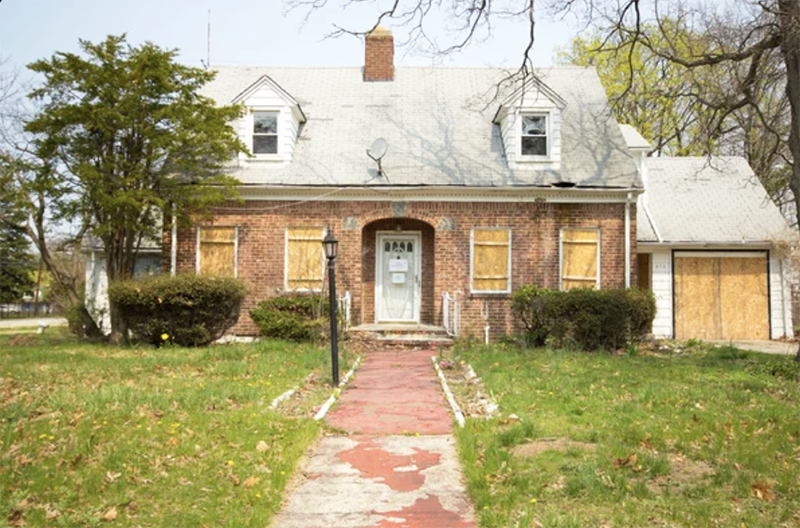Foreclosure is a legal process in which a lender attempts to recover the balance of a loan from a borrower who has defaulted on their payments. It typically occurs when a homeowner is unable to make their mortgage payments and falls behind on their loan.
Here’s a General Outline of How the Foreclosure Process Works:
- The borrower misses one or more mortgage payments.
- The lender sends a notice of default to the borrower, informing them that they are in default on their loan and have a certain number of days to bring their payments current.
- If the borrower does not bring their payments current within the required time period, the lender may start the foreclosure process.
- The lender files a lawsuit to foreclose on the property and the borrower is served with a summons and complaint.
- The borrower has the opportunity to contest the foreclosure by filing a response to the complaint.
- If the borrower does not contest the foreclosure, or if the court rules in favor of the lender, the lender can obtain a judgment of foreclosure.
- The lender can then sell the property at a public auction to the highest bidder. If the sale does not cover the balance of the loan, the borrower may still be responsible for paying the remaining debt.
It’s important to note that the foreclosure process can vary significantly depending on the laws of the state where the property is located and the specific circumstances of the borrower’s default. It’s always a good idea to seek legal advice if you are facing removal.
How Long Does Foreclosure Take in California?
The length of the foreclosure process in California can vary significantly depending on the specific circumstances of the case. However, it generally takes several months to complete the process.
Here’s a General Overview of the Timeline for a Typical Foreclosure in California:
- The borrower misses one or more mortgage payments.
- The lender sends a notice of default to the borrower, informing them that they are in default on their loan and have a certain number of days to bring their payments current.
- If the borrower does not bring their payments current within the required time period, the lender may start the foreclosure process by filing a lawsuit and serving the borrower with a summons and complaint.
- The borrower has 30 days to respond to the complaint. If the borrower does not respond or contests the foreclosure, the case may go to trial.
- If the borrower does not contest the preclude or if the court rules in favor of the lender, the lender can obtain a judgment of foreclosure.
- The lender must then wait at least 90 days before scheduling a sale of the property.
It’s important to note that the borrower has several options to try to avoid foreclosure, such as negotiating a loan modification or selling the property before it goes to auction. It’s also possible for the borrower to file for bankruptcy, which can temporarily halt the foreclosure process.
If you are facing foreclosure in California, it’s important to understand your options and seek legal assistance to help you navigate the process.
What Happens to the Homeowner’s Equity in Foreclosure Proceedings?
When a property is foreclosed upon, the homeowner’s equity in the property is typically wiped out. Equity is the difference between the value of the property and the amount of debt secured by the property, such as a mortgage.
In a foreclosure, the lender tries to recoup the unpaid balance of the loan by selling the property at a public auction. If the sale proceeds are not enough to cover the outstanding balance of the loan, the borrower may still be responsible for the remaining debt. This is known as a “deficiency judgment.”
If the property sells for more than the outstanding balance of the loan, the excess amount may be returned to the homeowner. However, this is not always the case, and it depends on the specific terms of the loan and the laws in the state where the property is located.
It’s important to note that a foreclosure can have a significant negative impact on a homeowner’s credit score and ability to borrow in the future. It’s always a good idea to explore all available options to try to avoid foreclosure if possible. If you are facing the possibility of foreclosure, it’s important to seek legal assistance to understand your rights and options.
What is Foreclosure? Foreclosure Explained for Beginners in Simple English by Local Records Office Video
How Does a Foreclosure Affect Credit?
A foreclosure can have a significant negative impact on a borrower’s credit score. A foreclosure is a serious event that indicates to creditors that the borrower was unable to meet their financial obligations and pay their mortgage as agreed. As a result, foreclosure can lower a borrower’s credit score significantly and make it more difficult to obtain credit in the future.
The specific impact of a foreclosure on a borrower’s credit score will depend on various factors, including the borrower’s credit history and the credit score before the foreclosure. In general, a foreclosure can remain on a borrower’s credit report for up to seven years, and it can significantly lower a borrower’s credit score for several years.
It’s important to note that foreclosure is not the only negative event that can affect a borrower’s credit score. Other negative events, such as late payments, charge-offs, and bankruptcy, can also have a negative impact on a borrower’s credit score.
If you are facing the possibility of foreclosure, it’s important to understand the potential impact on your credit and to explore all available options to try to avoid it if possible. If you are unable to avoid foreclosure, it’s important to start rebuilding your credit as soon as possible by paying your bills on time and working to improve your credit score over time.





